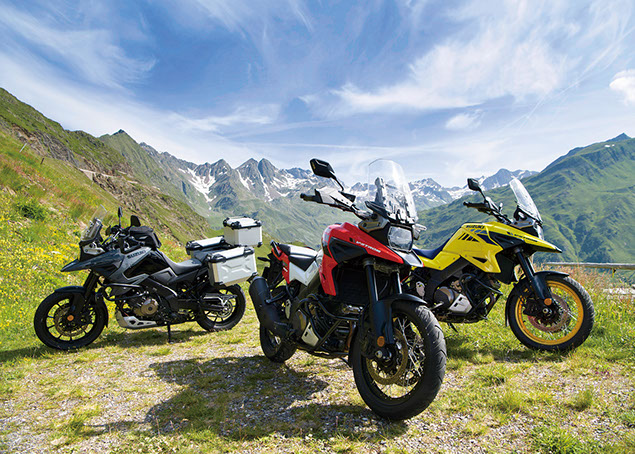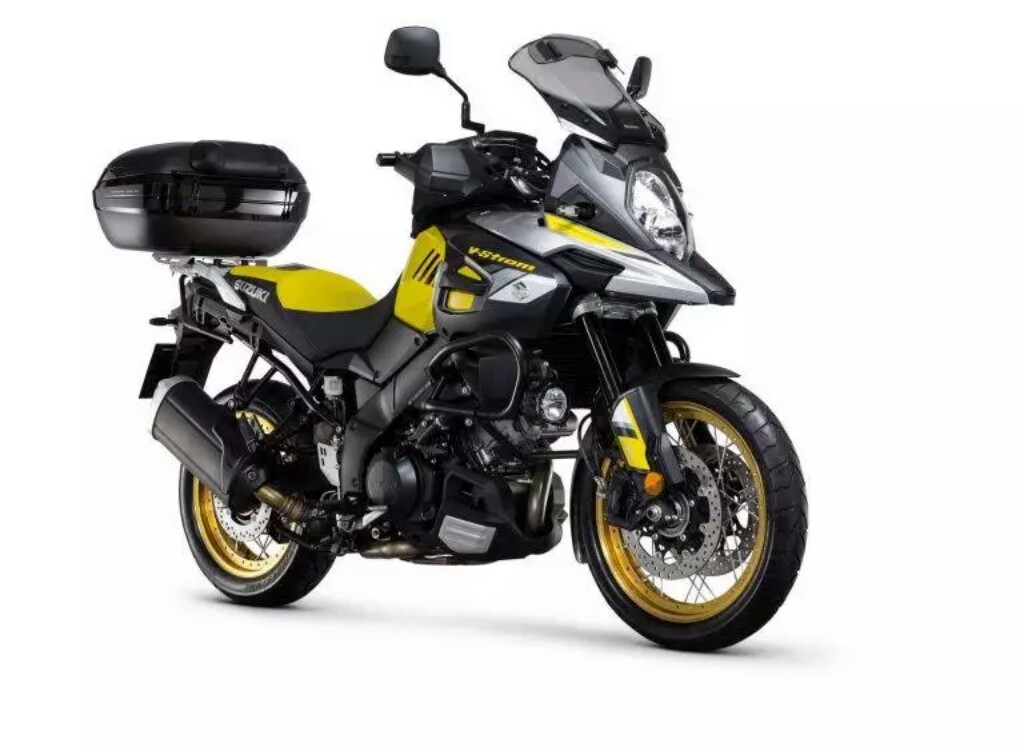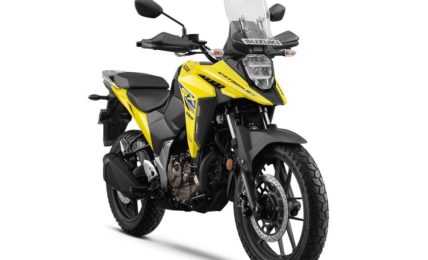The V-Strom has an aggressive mid-range punch than the TRK
Performance – On paper, the V-Strom has an upper-hand over the TRK but both the engines are quite different. The Suzuki has a V-Twin motor while the Benelli comes with a Parallel-Twin setup. Although, the difference is over 145cc between both the motors, the major difference is with the tuning. With more power and torque on offer the V-Strom just zooms past the TRK. It has a very strong mid-range and it is widespread throughout the rev-range. Benelli, on the other hand, has a completely opposite tune. It has a very good low-end and an enjoyable top-end but there is no mid-range punch at all! While the V-Strom’s motor is suited for off-roading duties, the TRK’s powerplant is suited for touring and mile munching.
The TRK 502 has a better low-end grunt and feels lively in the top-end too
V-Strom has a V-Twin rumble but the parallel-twin TRK sounds almost like an inline-4 motorcycle
During the test, the V-Strom returned us a fuel efficiency of 19 km/l while the TRK was close to 21 km/l combined. As both the motorcycles have a 20-litre fuel tank, the range is almost the same. The V-Strom has a lighter clutch as compared to the TRK while the gear shifts are crisp on both the motorcycles. The V-Strom is equipped with traction control and it needs it. The TRK, on the other hand, does not have traction control and as the power delivery is not that immediate, it stays in control with throttle modulations. Both the bikes have some vibrations kicking-in but the Benelli feels smoother in the low-end while the V-Strom feels at home when pushed hard.
Suspension setup is more supple on the V-Strom
Riding Dynamics – The ergonomics of the V-Strom make it a tall boy motorcycle as compared to the TRK. The suspension setup also is more road biased on the TRK while the V-Strom is more suited for off-road riding. The TRK is bulkier and heavier than the V-Strom keeping it more glued to the road. The advantage of weight and the bulk also comes in as heavy wind blasts don’t affect the TRK as much as it does the V-Strom. The 502 here comes equipped with road rubber and 17-inch tyres both at the front and the rear. The V-Strom is also equipped with road-biased rubber but the front wheel is an off-size 19-inch unit. The tyres are also skinnier on the V-Strom as compared to the TRK. The front suspension on the TRK is an upside-down unit while the V-Strom gets telescopic forks making the TRK more feedback rich.
TRK is more road-biased while comfortable for shorter riders
The TRK 502 is calm and composed while the V-Strom 650XT is sharp and flickable
The windscreen visor on the V-Strom is adjustable but it is a bolt-on unit, while the one on the TRK is a fixed unit. Seeing through the windscreen isn’t really of any help in both the motorcycles. Both the TRK and V-Strom get dual discs at the front and a single disc at the rear. The TRK 502 has a slightly bigger pair at the front and the braking feedback is equally strong. The ABS unit works flawlessly on both the motorcycles and the feedback from the brakes is very good but an option to switch off ABS makes the TRK more suitable for off-road duties. The TRK does not nosedive as much as the V-Strom even with the extra weight as the V-Strom has a softer setup as stock. The rebound on the rear suspension can be adjusted easily on both the motorcycles according to the road conditions.
TRK is very stable, V-Strom is comparatively lighter on its feet
Verdict – The Suzuki V-Strom 650XT is over Rs. 2 lakhs costlier than the Benelli TRK 502. While the TRK is composed and practical, the V-Strom demands a premium and is more enjoyable. The V-Strom feels very well built and has a ‘can do anything’ attitude to it. But the TRK is a proper tourer and gives some hint of adventure. The engine of the V-Strom is solid and the motorcycle is a performer while the TRK has the suspension and dynamics well suited for our Indian roads. While the Italian here is quite pleasing, the Japanese motorcycle is the winner of the shootout. But if budget constraints come into the picture, the TRK 502 is a brilliant motorcycle to go for. And while we are at it, there’s a 502X as well which can add up some adventure thrill to the party.
Benelli is value for money while Suzuki demands the premium
Testers’ Note:




